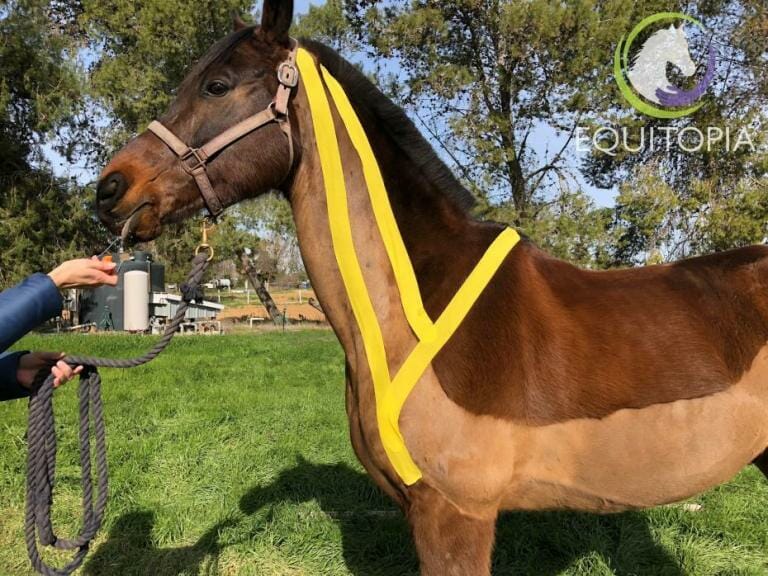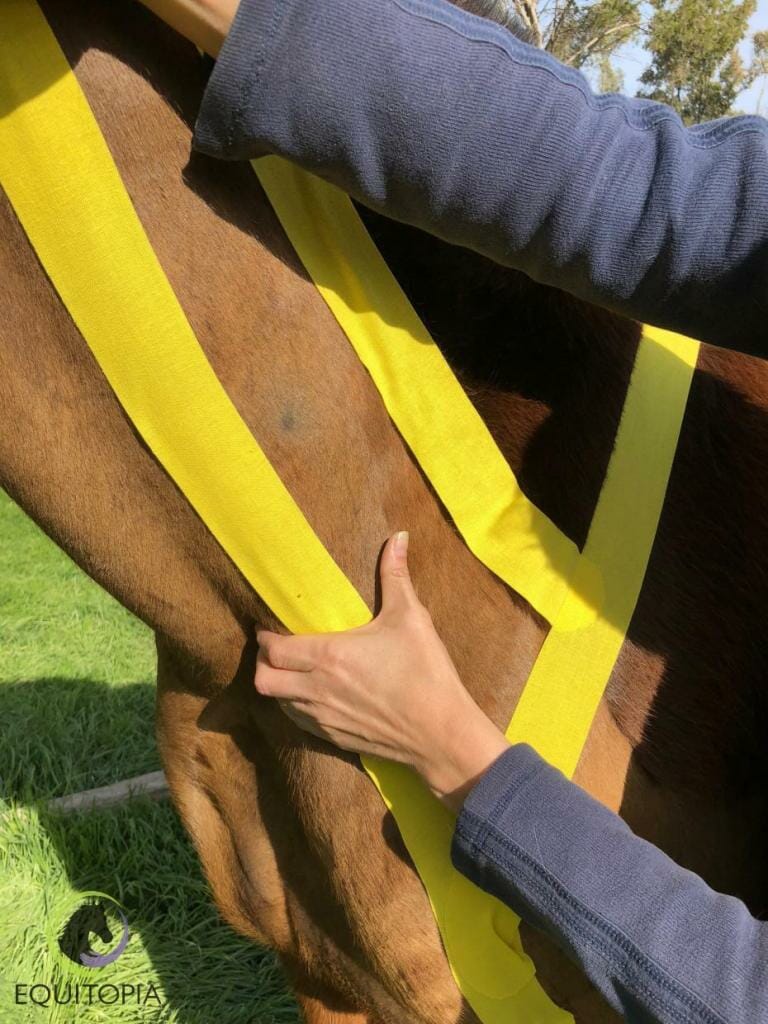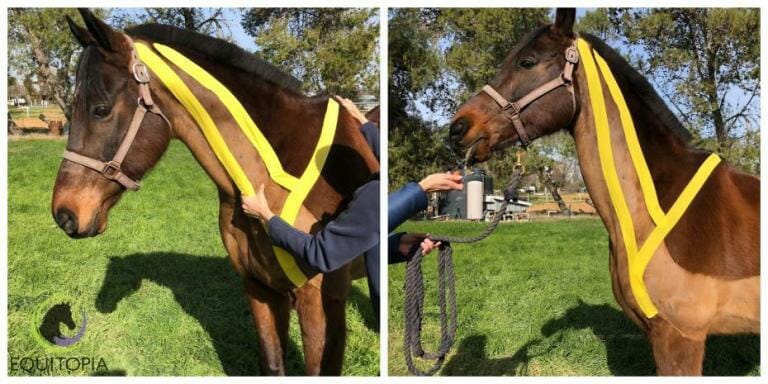Neck Bracing and Forelimb Pain – Part 2

Test – rounding response
Here’s a simple test you can do on your own horse at home. This test is a fun way to get to know your horse’s anatomy, but it will not replace an exam by a veterinarian. It could help you detect an issue and reach out for further help and diagnostics.
I learned this simple technique from Arlene White who is a human and animal physical therapist at the Animal Rehab Institute in Florida. If you are on the left side of the horse, use your left hand to gently but firmly hold the brachiocephalicus muscle and apply gentle pressure. Try to make your hand feel gentle but firm while slowly squeezing.

Photo above: Use your hand to gently squeeze the brachiocephaicus muscle.
Horses with a healthy brachiocephalicus and omotransversarius will round their neck up in an arched shape when these muscles are gently squeezed. This creates the motion we often refer to as “rounding” when we are riding. If a horse has healthy, non-painful muscles he will round away when a small amount of pressure is applied.
A horse with painful muscles at the base of the neck will lift his head, step backwards and invert his neck. Some horses may pin their ears or try to bite. Always be aware of your own safety and have a handler help you if necessary.

Photo below left: Here the horse shows a healthy rounding response when brachiocephalicus is squeezed.
Photo below right: The horse has been coaxed with a treat into a position that would display a painful response to this test.
Signs and solutions
If your horse has a history of chronic painful conditions in the forelegs, have a veterinarian do a thorough examination of your horse’s neck. Bracing of the neck muscles maybe a continued part of how these horses move and alleviate stresses to the front legs.
This can be subtle to see, but a horse who is compensating this way will have a hard time rounding the neck when ridden, and may feel very heavy or stiff the bridle. I’ve known horses who were thought to be “hard mouthed”, however upon examination by a vet there was an underlying neck issue likely caused by prolonged compensatory bracing.
These horses will often struggle to build a healthy topline and will look “ewe necked”. Horses with over used neck muscles can benefit greatly from massage, stretching and mobilization exercises. Pain relief can be achieved if the muscles can relax and move normally.
Horses with acute pain are sometimes treated by the veterinarian with shockwave and injection therapies. Often a further inspection of the forelimb pain source will be required, which may mean the original lameness isn’t as well controlled as previously believed.
Sorting the issues out can take some time and a good team of professionals including your vet, farrier, bodyworker, chiropractor and massage therapist. Horses make tremendous progress and even fully recover their neck movement with the right help. Your horse may become a light, willing partner with a little attention paid to his neck.